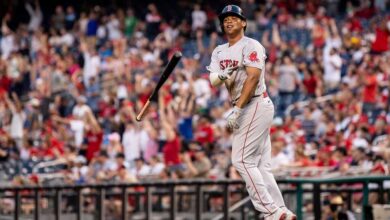

There is a hesitance for Boston Red Sox fans to quickly accept Ben Cherington as the successor to front-office guru Theo Epstein. Why should they? Theo brought in names, talent, and most importantly, championships, and he did so with bold and controversial moves dealing fan favorites Nomar Garciaparra and Manny Ramirez while orchestrating complex, three-team deadline deals to do so.
Cherington has not.
Cherington, instead, enters a unique situation where the groundwork has been laid for him with a strong front three in the rotation and offensive support in Dustin Pedroia, Adrian Gonzalez, and resurgent Jacoby Ellsbury. But still, Cherington inherits a complicated set of circumstances given the monumental shortcomings of the 2011 season.
As in a chess match, Cherington has encountered every challenge so far by focusing on the importance of the move at hand while remaining aware of what needs to be done three moves later.
The first move was to find a manager, but when he did, the baseball gods countered the Red Sox front office by withholding a closer when Jonathan Papelbon signed with Philadelphia.
More challenges.
Perhaps Cherington’s greatest strength has been his ability to ensure the highest yield for the pieces he has sacrificed. Moving the perennial flash-in-the-pan Jed Lowrie to Houston brought bullpen consistency and potential closer ability in Mark Melancon, who, much to his credit coming out of a week National League system and hitter-friendly Minute Maid Park, posted an 8-4 record as a closer with the Astros in 2011.
The move for Melancon made it possible for the Red Sox to sit on the closer market and wait for the natural progression of things to force the hand of the Oakland Athletics to part with closer Andrew Bailey for the low price of Josh Reddick, an average yet promising outfield prospect, but one who is easily replaced by the likes of Ryan Kalish in Pawtucket or Ryan Sweeney, who also came over from Oakland in the Bailey deal.
Additionally, Cherington brought in Nick Punto, which really put the writing on the wall for Marco Scutaro, who was traded Saturday to the Rockies for Clayton Mortensen. The acquisition of Mortensen builds on the cushion of starter potential developed by the free-agent signings of aging starters Vicente Padilla and Aaron Cook.
If Scutaro, Lowrie and Reddick are the pawns, their sacrifice has opened up possibilities to capture a knight in Melancon, the queen in Bailey, and potentially the king at the end of it all: Roy Oswalt.
Cherington and first-year manager Bobby Valentine still have glaring holes to fill, definitively in the back end of the rotation, as well as shortstop and right field — and even potentially in left field, depending on the severity of the injury to Carl Crawford. Losing the $6 million owed to Scutaro frees capital to sign Oswalt, who has already been projected as flexible on salary. Possible solutions to the outfield and middle-infielder gaps include the discussion of Cody Ross and former Red Sox prospect Hanley Ramirez. If the Red Sox do manage to sign Oswalt (which is projected as early as Tuesday, reported the Boston Globe’s Gordon Edes) it will be due in no short part to the patient strategy with which Cherington has handled the challenges of the 2011-2012 offseason.




